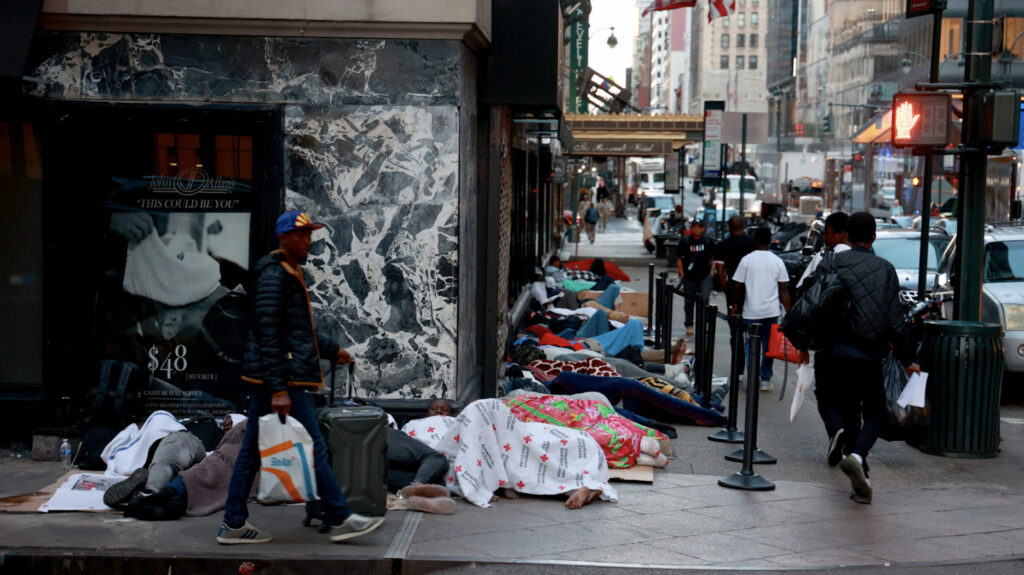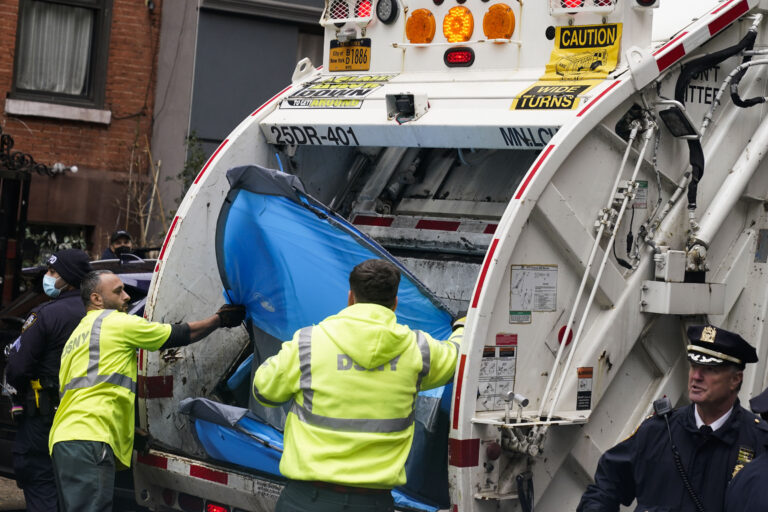
As New York City grapples with an unprecedented influx of migrants, it is becoming increasingly clear that its leadership is failing in their response to this crisis. The city’s inability to provide essential resources and decent living conditions for these newcomers is worsened by the deprivation of federal aid from conservative powers in Congress.
Since the beginning of 2023 NYC has received over 100,000 migrants and asylum seekers, costing the city an estimated $9.8 million a day. Budget estimates are predicting the total cost will amount to $5 billion for the 2023-2024 fiscal year, and that amount will grow to $12 billion by the end of 2025. This budget is being spent on shelter, medical and immigration services, transportation, and handouts to migrants such as clothes, food, water, and mobile phones. This strain on New York’s already overwhelmed shelter system has resulted in Mayor Eric Adams claiming this crisis will “destroy” New York City. In his address during a meeting, Mayor Adams emphasized the predicted widespread effect, stating that “every community in this city is going to be impacted” and warned New Yorkers that their access to city services will be limited which has begun to inspire protests across the city. A tide of new voices are sweeping such protests with a clear message: they are not anti-immigrant but are protesting specifically about housing migrants in schools and recreational centers.
In May 2023, a demonstration took place outside P.S. 172 in Brooklyn, a school where the gym had been repurposed as emergency housing for migrants. Gabriela Vizhnag, a mother of a student and an immigrant from Mexico stated, “I am not racist or anti-immigrant.” Rather, her objection was about housing individuals in a school gym with no showers and only two bathrooms, stressing that such an arrangement is neither conducive for the well-being of the children nor the migrants.
She is entirely correct in stating so. Many migrants are currently living in overcrowded, unsafe, and unhygienic conditions, and these risks are compounded for young children. These individuals have just navigated the treacherous journey of escaping their home country and crossing the U.S border. They arrive thirsty, hungry, in need of medical attention and mental health support but continue to be subjected to extensive waiting periods and are then moved around the city from shelter to shelter as the city struggles to find a bed for everyone to sleep in.
The lack of resource provision can be explained by the migrant crisis being treated as a localized issue for the New York city government to address, rather than recognizing it as a manifestation of the broader immigration challenges faced by the entire country. Over the past few months, Mayor Adams has been vocal in his criticism of his own party members including President Biden and Governor of New York State, Kathy Hochul, for what he sees as their failure to assist the city in managing the influx of asylum seekers. A reporter from the Monday Post, Nicole Gelinas, theorized the lack of federal aid is to keep this crisis hidden from swing voters and avoid the message that Washington is allowing in an unlimited number of migrants that could trigger more border surges.
The partisan lines of the USA’s two party system creates a harsh distinction in immigration, between those in favor and those heavily against. Republican congressman Nick LaLota of New York’s 1st Congressional district introduced the No Bailout for Sanctuary Cities Act which prevents any federal funding going towards the migrant crisis, specifically any funding towards food, shelter, healthcare services, legal services, and transportation. This bill is currently still being debated in the House of Representatives, but its passing will do nothing to stop families from crossing the border: it will only leave them more vulnerable and prolong their suffering in sanctuary cities and the US in general. Such denial of additional resources has left New York to scrape together what they already have to manage this crisis, and this response is not sustainable or safe for the migrants nor residents of the city.
The “band-aid” responses of finding people temporary places to live will not solve this crisis without being coupled with immigration services, work permit approvals and expansion of the shelter system into long term housing provisions. This country and city were built by hard working immigrants from the very beginning, and for the city and country to be turning their backs on this new wave of people in need is not only extremely selfish but disrespectful to this legacy.



